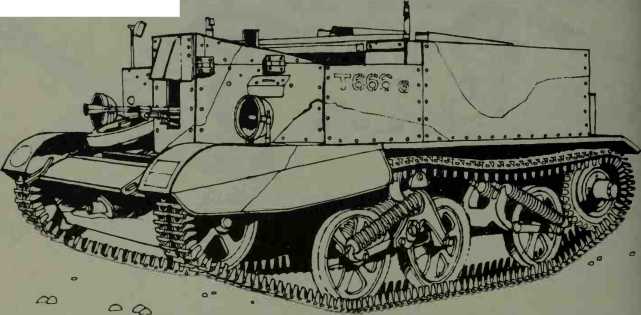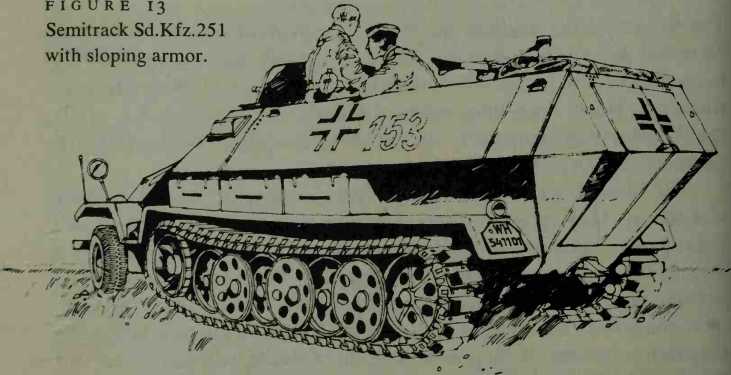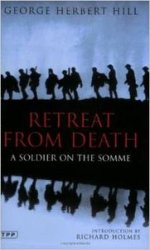The weight of the artillery pieces and the way in which they had to be towed and positioned in the field were reasons enough why artillery needed tracked vehicles rather than horses. And the artillery had used tracked vehicles since long before the tank was invented. Yet, while the British Army returned to heavy-wheeled vehicles for this task, the Germans preferred the half-track.
The idea of combining wheeled front steering with tracked drive was that of M. Kegresse, a Frenchman working in the Russian Tsar’s garage, who had made a vehicle for use in snow. He adapted an Austin car, using his own method of suspension. The result was later to become the Austin-Kegresse armored car, used by the Red Army and, after some were captured in 1920, by the Polish Army too. It was the suspensioa system of Kegresse that the Citroen company used for five half-tracks that crossed the Sahara desert in 1923.
During the 1930s, the German Army provided its panzer divisions with half-tracks. These ranged from the 5-ton Leickter Zugkrafnvagen (light prime mover) that was used to tow antitank guns and light anti-aircrah guns, through the middle-size ones for howitzers and pontoon-bridge sections, to the huge 18-ton Schwerer Zugkraftwagen (heavy prime mover) that could winch a damaged tank out of the mud onto a trailer and tow it back to the repair shops.
In spite of all the expensive refinements, the half-track remained cheaper than any fully tracked vehicle because it was steered by the front wheels, like a motorcar, instead of by a complex system changing the speed of either track, as in tank steering.
FIGURE 12 Carrier Universal No. 1 Mkl (Bren gun carrier).


A half-track vehicle caused far less damage to the road surface and was only marginally less efficient moving cross-country than a fully tracked vehicle. But anything towed behind the half-track reduced its cross-country capability drastically. For this reason, artillery experts and tank soldiers alike agreed that guns must be put inside such vehicles. In 1940, however, virtually none of these self-propelled guns were in use.
The infantry’s priority for tracked vehicles was even lower than the artillery’s. Interwar theorists had never been able to agree about what such a vehicle should look like. French and British tank men had minimized the importance of infantry in the armored division: they wanted all-tank armies. Experiments with one-man tanks, which would give every man his own individual tankette, had been tried. This later led to Britain’s Bren gun carrier, a lightweight, open-topped tracked vehicle that could carry four infantrymen and heavy infantry weapons across rough country. It proved too fragile for combat.
The German armored personnel carrier was adapted from artillery half-tracks and was provided with thin armor sloped on all sides to deflect hits. It was not designed as a vehicle from which to fight, though its open top enabled the infantrymen to jump out quickly. The open top, however, made it vulnerable to grenades. The large track area (it was three-quarter track) gave it excellent traction. Steering difficulties were overcome by a cleverly designed device which applied a track brake when the steering wheel was turned far enough.
These vehicles transformed the fighting quality of the armored divisions. They carried the infantry alongside the tanks, brought heavy mortars and heavy machine guns with them, and towed heavy guns in the forefront of the battle. Eventually they became a preferred vehicle of reconnaissance units too. Yet versatility created other problems. Half-tracks were required for carrying ammunition, laying cables, evacuating casualties, artillery observation, and, not least, as Kommando-Panzerwagen (mobile armored command cars) like the specially equipped one that Guderian used.
Despite the immense efforts of German manufacturers, armored personnel carriers were always in short supply. At the time of the Polish campaign, the only ones in use were a few given to Guderian’s 3.Pz. Div. Few of the German infantry had ever seen one of these armored personnel carriers. With the average German infantry regiment (of over 3,000 men) allocated only seventy-three motor vehicles of any type, it was a lucky soldier who even got a ride on a truck.




 World History
World History









